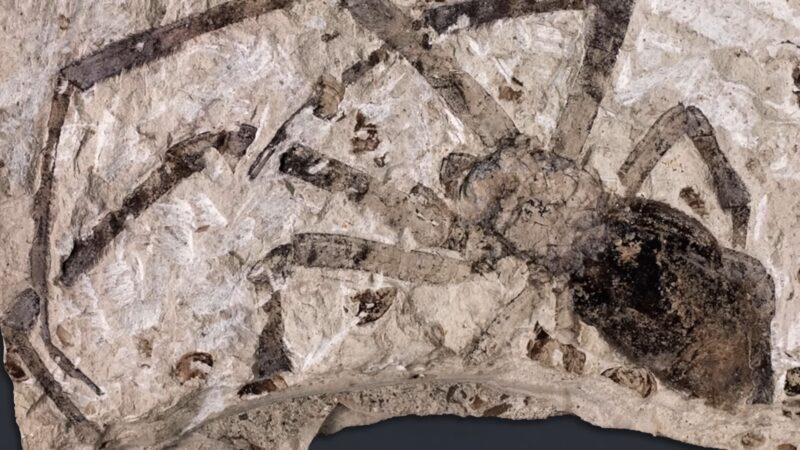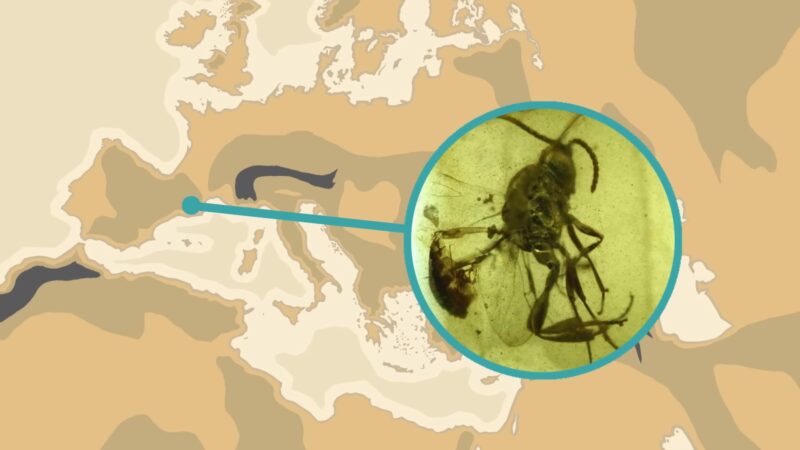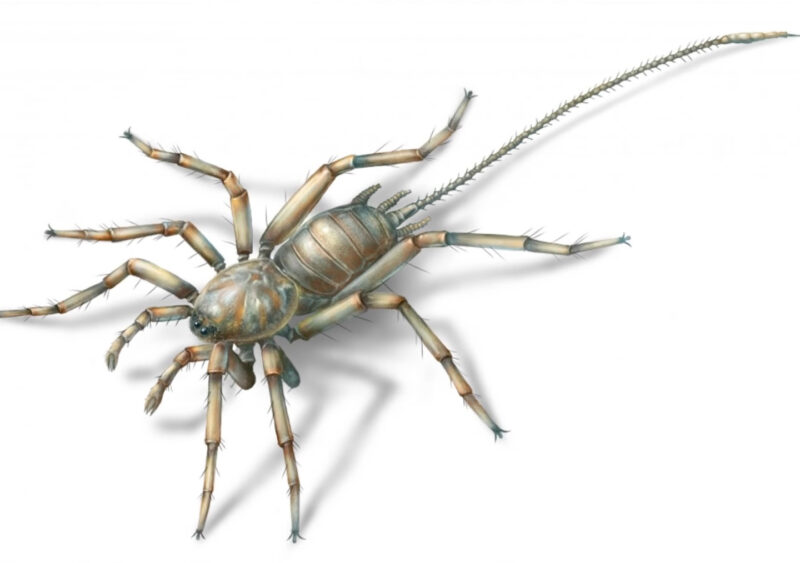In the realm of science fiction, the idea of ancient creatures coming back to life has always been a tantalizing concept. From the terrifying dinosaurs of “Jurassic Park” to the menacing xenomorphs of the “Alien” franchise, these tales have captured our imagination.
But what if some of these creatures were not just figments of our imagination? What if they once roamed our Earth?
Recent discoveries have brought to light a creature that seems to blur the lines between fiction and reality: an ancient spider with a tail that eerily resembles the ‘Alien’ facehugger.
The Allure of Cloning Prehistoric Creatures
The dream of resurrecting the past…
As cloning technology advances, the allure of bringing prehistoric animals back to life grows stronger. The idea of a world where we can interact with velociraptors or even domesticate saber-toothed cats is undeniably fascinating.
The promise of unlocking the past and experiencing it firsthand is a tantalizing prospect for many. However, not all ancient creatures are as endearing or majestic as the dinosaurs.
Some, like the recently discovered arachnid species, might be better left in the annals of history. The thought of a spider with a tail roaming our world is enough to send shivers down anyone’s spine.
The Horrifying Discovery

When eight legs just aren’t enough…
In a world where spiders are already a common phobia, the discovery of four prehistoric spiders with prehensile tails fossilized in amber is the stuff of nightmares. These creatures, with their additional limb, challenge our understanding of spiders. The tail, it seems, was not just a decorative appendage but a functional one, used for exploration and navigation.
The dig site in Myanmar, where these creatures were found, has been a treasure trove of discoveries. From perfectly preserved insects in amber to these tail-bearing spiders, the site offers a glimpse into a world long gone.
But among all the finds, it’s the spiders that have captured the world’s attention.
The Evolutionary Significance
Unraveling the mysteries of evolution…
These ancient spiders, named chimerarachne yingi, represent a significant link in the evolutionary chain. Their tails are reminiscent of vestigial appendages found in earlier ancestors of modern spiders. This discovery has scientists buzzing with excitement, as it provides insights into the evolutionary journey of spiders.
The name “chimerarachne yingi” is a nod to its unique nature. Drawing from Greek mythology, “chimera” refers to creatures that were hybrids of two different animals. “Arachne,” on the other hand, is the Greek term for spider. Together, they perfectly describe this spider that seems to be a blend of species.
The ‘Alien’ Connection

From the big screen to reality…
For fans of the “Alien” franchise, the resemblance of chimerarachne yingi to the xenomorph facehugger is uncanny. The face-hugger, with its leggy embrace and menacing tail, has become an iconic image in sci-fi horror. And now, it seems, nature had its own version of this terrifying creature.
While these ancient spiders are safely encased in amber, their discovery does raise questions. What other creatures from our past are waiting to be discovered? And as cloning technology progresses, will we one day see these creatures brought back to life?
The Future Implications
Playing with the fabric of life…
The discovery of chimerarachne yingi serves as a reminder of the wonders and horrors of our planet’s history. As we continue to push the boundaries of science, we must tread carefully.
The idea of cloning these ancient creatures, while fascinating, is fraught with ethical and practical challenges. For now, we can marvel at these ancient spiders from the safety of our present.
But as we look to the future, we must consider the implications of our actions. After all, some things, no matter how intriguing, might be better left in the past.
FAQ
How old are these fossilized spiders?
The exact age of these spiders is still under study, but they are believed to be from the Cretaceous period, making them over 100 million years old.
Are there any living descendants of the chimerarachne yingi?
While modern spiders are distant relatives, there are no known direct descendants of the chimerarachne yingi alive today.
Why is the tail of the spider significant?
The tail, or “flagellum,” is significant because it represents an evolutionary trait not seen in modern spiders. It provides insights into the evolutionary journey of spiders and their adaptation over millions of years.
Could these spiders be cloned and brought back to life?
While the idea is intriguing, the current state of cloning technology does not allow for the resurrection of creatures from such ancient DNA. Moreover, ethical and ecological considerations would likely prevent such endeavors.
Were these spiders dangerous to humans?
Given their small size (only a quarter-inch long), they were likely not a direct threat to humans. However, their ecological role and behavior in their habitat remain subjects of research.
How were these spiders preserved so well?
The spiders were encased in amber, a fossilized tree resin. Amber is known for its preservative properties, allowing for the exceptional preservation of ancient organisms.
Final Words
The discovery of the chimerarachne yingi is a testament to the wonders of our planet’s rich history. As we continue to unearth the mysteries of the past, we are reminded of the delicate balance of life and the evolutionary marvels that have shaped our world.
While the idea of cloning and resurrecting ancient creatures is tantalizing, it’s essential to approach such prospects with caution and respect for the natural order. The past, with all its wonders and horrors, offers valuable lessons for the present and the future.
Let’s ensure that our curiosity is guided by wisdom and responsibility.













